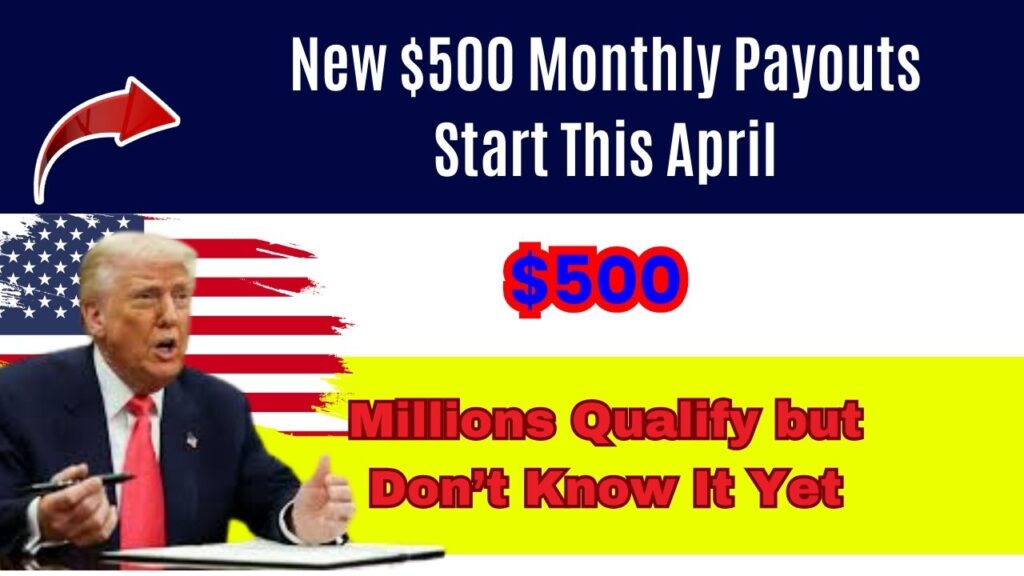New $500 Monthly Payouts: Starting in April 2025, a number of U.S. states and cities have launched or expanded programs that offer $500 monthly payouts to qualifying individuals and families. Known as guaranteed income or economic relief programs, these initiatives are designed to support low- and middle-income households struggling with the rising cost of living. Yet, despite their growing availability, millions of Americans may qualify and not even realize it.
In this guide, we’ll walk you through who qualifies, how these programs work, and what steps to take if you think you’re eligible. Whether you’re a single parent in Tacoma, a working family in New Mexico, or a curious professional looking to better understand economic support trends in the U.S., this article offers clear, actionable insights backed by trusted sources.

New $500 Monthly Payouts Start This April
| Program/Initiative | Location | Monthly Payment | Eligibility Criteria | Status |
|---|---|---|---|---|
| GRIT 2.0 | Tacoma, WA | $500/month | Single-parent households, 100%-200% FPL | Closed (participants selected) |
| NM Tax Rebate | New Mexico | $500-$1000 (one-time) | Income below $75k (single), $150k (joint) | Open (for April filers) |
| Inflation Relief Bill | New York (proposed) | $300-$500 | Income under $150k/$300k | Pending budget approval |
The launch of $500 monthly payouts in April 2025 is part of a larger movement toward economic fairness and community resilience. While programs like GRIT 2.0 in Tacoma or New Mexico’s tax rebate may seem small, they represent big steps in helping Americans cope with financial pressures. If you think you qualify, don’t wait—check your local listings, sign up for updates, and gather your documents now.
Understanding Guaranteed Income Programs
Guaranteed income programs aren’t new, but they’ve gained major traction since the COVID-19 pandemic highlighted economic inequality in the U.S. These programs offer unconditional cash payments, usually on a monthly basis, to help people cover essentials like rent, groceries, transportation, and childcare.
Unlike traditional welfare or unemployment benefits, guaranteed income doesn’t require recipients to prove ongoing hardship or meet complex eligibility conditions. It’s a simple concept: people know what they need best, so give them the money and let them decide.
Why $500 a Month?
The $500 amount has become a common benchmark because it’s enough to make a noticeable difference—paying a utility bill, covering a car payment, or buying a week’s worth of groceries—without replacing full-time income. In cities like Stockton, California, early pilot programs found that participants used the money for basic needs, education, and job training.
Who Qualifies and How to Apply For $500 Monthly Payouts
Each program has different rules, but they generally focus on low-income individuals, single parents, and underrepresented communities. Here are the key details from some current and upcoming programs:
GRIT 2.0 in Tacoma, Washington
This second version of Tacoma’s GRIT (Growing Resilience in Tacoma) program provides $500 monthly payments from April 2024 through June 2025. Participants were selected via lottery.
Eligibility:
- Resident of Tacoma
- Single-parent household
- Employed and earning 100%-200% of the Federal Poverty Level (FPL)
- Live in one of the target ZIP codes
More info here
New Mexico Low-Income Tax Rebate
New Mexico is issuing tax rebates up to $1,000 to eligible residents. This includes a $500 check for single filers earning less than $75,000 and $1,000 for joint filers under $150,000.
Eligibility:
- Filed state taxes by the April deadline
- Meet income thresholds
Check the NM Department of Revenue for updates.
New York Inflation Relief Proposal
New York’s proposed plan includes monthly or one-time payments of $300-$500 to middle-income households. While this initiative is still pending, it signals a growing recognition of the need for state-led economic support.
Eligibility (if passed):
- Individuals earning under $150,000
- Families earning under $300,000
Stay updated at ny.gov.
How These Programs Help
Programs like these aren’t just handouts—they’re investments in people and communities. Here are a few real-world benefits:
- Financial Stability: Helps cover essentials and avoid payday loans.
- Mental Health: Reduces stress and anxiety around bills and debt.
- Workforce Participation: Participants often use the money for transportation or childcare, making it easier to keep jobs.
Studies from the Economic Security Project show that recipients are more likely to find full-time employment after receiving monthly payments (Source).
Practical Advice: How to Prepare and Apply
Even if applications are currently closed in your area, here’s how to get ready:
Step 1: Know Your Income Level
Check if you fall under the income requirements (usually based on the Federal Poverty Guidelines).
See the latest FPL guidelines here
Step 2: Gather Documents
Have recent tax returns, pay stubs, and proof of residency on hand.
Step 3: Watch for Local Announcements
Many programs are administered at the city or county level. Sign up for newsletters from local government websites.
Step 4: Apply Early
Programs often use lottery systems or have limited funds, so submitting your application early can boost your chances.
FAQs About New $500 Monthly Payouts Start This April
Do I have to pay taxes on the $500 monthly payouts?
In most cases, yes. These payments are considered taxable income unless explicitly exempted.
Can I qualify for more than one program?
It depends on the program rules, but generally you can apply to multiple local or state initiatives, provided you meet eligibility for each.
Are these payments recurring forever?
No. Most guaranteed income pilots last 12-24 months. However, long-term policy efforts are underway in several states.
What if I missed the application deadline?
Stay informed. Many cities plan future rounds based on available funding and feedback from earlier pilots.